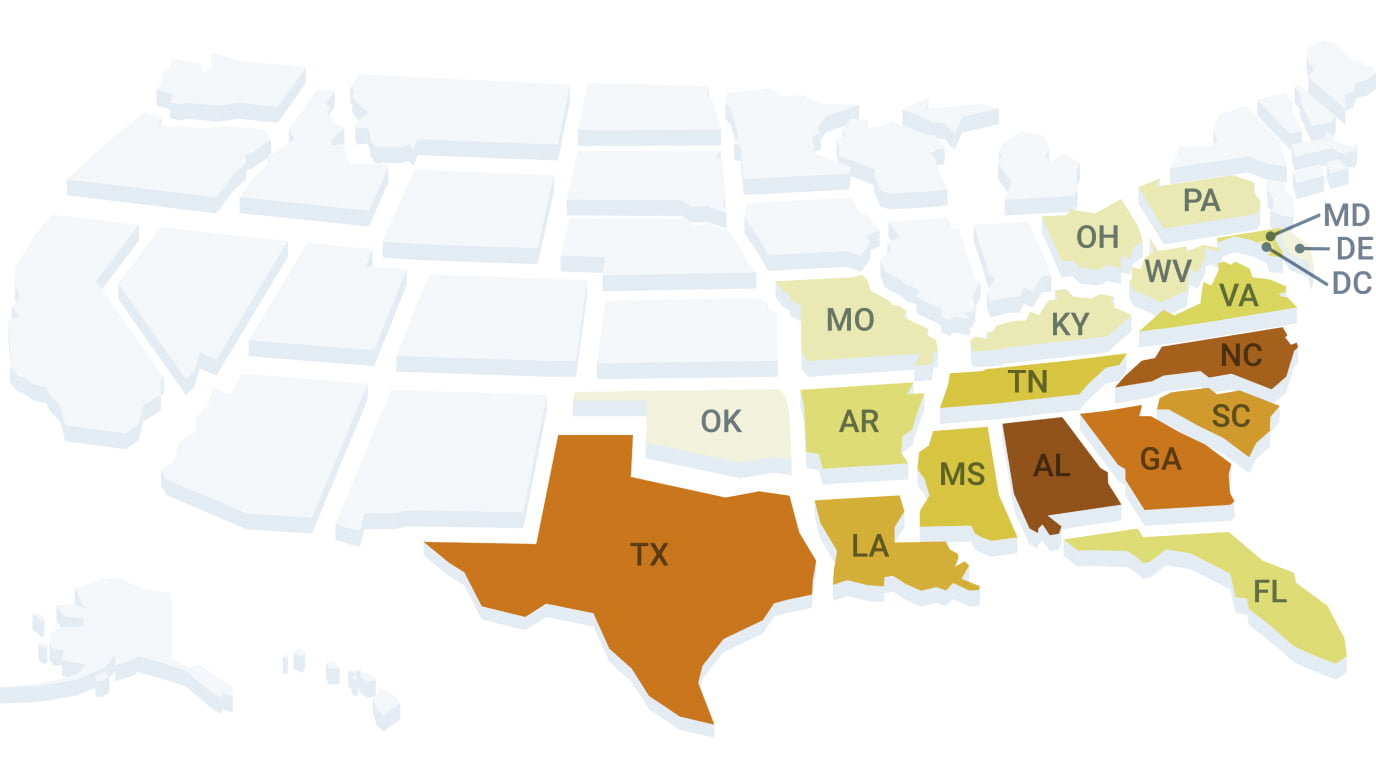Which States have the Most HBCUs?
A complete list of historically Black colleges and universities in the U.S. by state

HBCUs have played a critical role in higher education for Black students over the past 150+ years. Many historically Black colleges were founded after the Civil War to educate formerly enslaved people and their children. Others were created under the second Morrill Act of 1890 requiring states with segregated public higher education to offer land-grant colleges for African Americans.
Today, HBCUs continue to be a cornerstone of education for a diverse student population. Historically Black colleges are significant drivers of economic mobility for their students, and in some cases offer a higher payoff for Black students than predominantly white institutions. HBCUs are also better equipped to support Black students as they navigate unique barriers in higher education.
The benefits of attending an HBCU, alongside factors such as the racial justice movement and higher profile visibility in recent years, have led to enrollment increases for many HBCUs in the 2021-22 school year.
Where are HBCUs located in the United States?

- Alabama: 14
- North Carolina: 10
- Georgia: 9
- Texas: 9
- South Carolina: 8
- Louisiana: 7
- Mississippi: 6
- Tennessee: 6
- Virginia: 5
- Arkansas: 4
- Florida: 4
- Maryland: 4
- District of Columbia: 3
- Kentucky: 2
- Missouri: 2
- Ohio: 2
- Pennsylvania: 2
- West Virginia: 2
- Delaware: 1
- Oklahoma: 1
- Virgin Islands: 1
Source: IPEDS
Alabama, North Carolina, Georgia, and Texas are the states with the most HBCUs. Texas and Georgia are also two of the are:
- North Carolina A&T State University in Greensboro, North Carolina
- St. Philip's College in San Antonio, Texas
- Howard University in Washington, D.C.
- Prairie View A&M University in Prairie View, Texas
- Florida A&M University in Tallahassee, Florida
